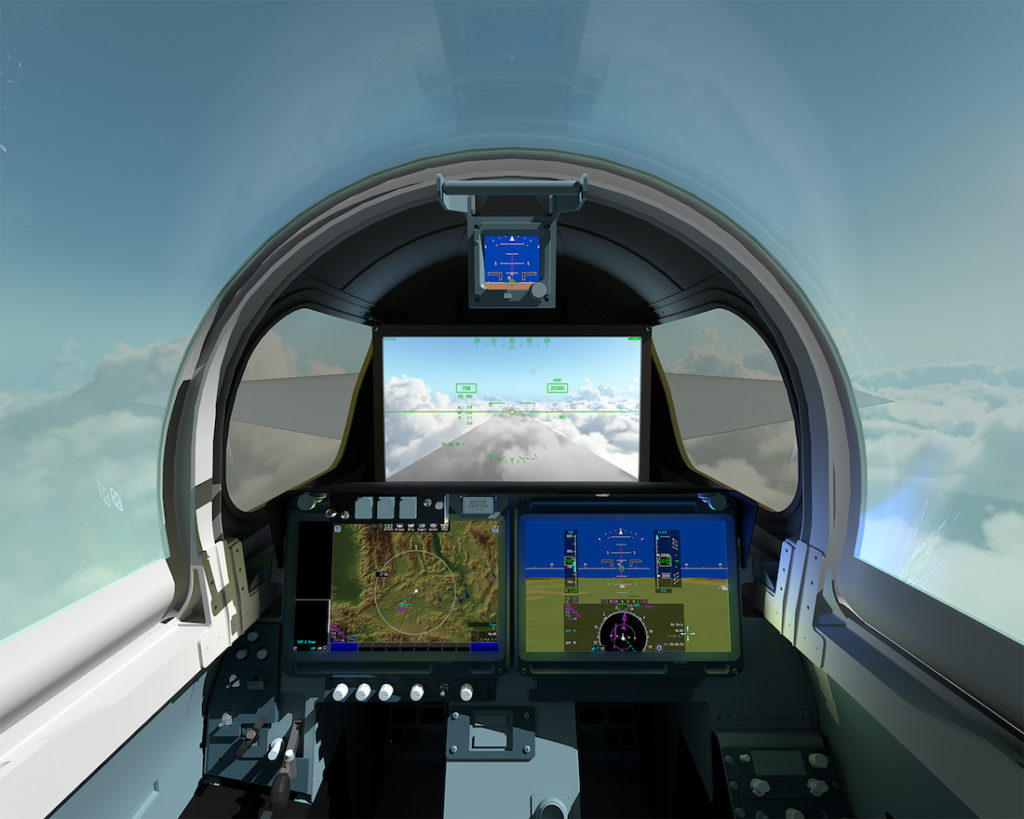
NASA released a new computer rendering of the X-59 supersonic demonstrator aircraft’s cockpit, shown here, featuring a 4K monitor on top of two traditional cockpit displays. Photo: Lockheed Martin
The cockpit of NASA’s X-59 Quiet Supersonic Technology (QueSST) demonstrator aircraft will use a 4K monitor as its primary forward looking field of view for pilots, according to new system supplier details and imagery released by the agency and Collins Aerospace.
QueSST is being developed as a demonstrator aircraft that NASA will use to help civil aviation regulators develop airworthiness noise standards to certify and regulate future supersonic transport designs. NASA released an image of the X-59’s cockpit showing two large high-definition traditional cockpit displays underneath the 4K monitor, which is part of the aircraft’s external visibility system.
The visibility system will show the pilot stitched images from two cameras outside the aircraft combined with terrain data and object detection sensor fusion. CoreAVI’s safety critical Vulkan driver is being used to develop graphing and computing functionality for the system. Collins EVS-3600 enhanced vision system will be featured on the X-59 to provide real-time imagery of runway lighting, terrain and obstacles.
NASA’s new image also shows that the cockpit will not be completely windowless, as it features a traditional canopy with two windows to the left and right of the pilot seat. However, the only forward-looking view from the cockpit will be generated by the 4K monitor screen.
Collins also announced another new supplier award for the X-59 during the 2019 Paris Air Show, to provide the environmental control systems, flaps, ailerons and rudder for the supersonic demonstrator. The environmental system will be comprised of the engine bleed air, air conditioning and cockpit pressure control systems.

X-59 QueSST low-boom demonstrator design concept. Photo: Lockheed Martin
Lockheed Martin is developing the X-59 to fly at 55,000 feet with a cruising speed of 940 mph. Engineers at Collins, Lockheed and NASA are also looking to give X-59 pilots the ability to predict in real time where the aircraft will generate a sonic boom when flying at speeds greater than Mach 1. The discovery and development of such technology could eventually be key to allowing the supersonic airplanes being developed by Aerion and Boom to fly over land when they’re ready for commercial passenger-carrying flights.
NASA expects to complete the first flight of the X-59 in 2021. Data from flight testing of the X-59 will be used to help the agency establish an acceptable commercial supersonic noise standard that could lead to eventual changes in civil aviation regulations that currently prevent supersonic flights over land.